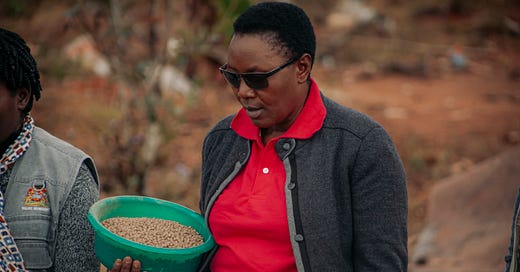Laness Chavula, fish farmer extra-ordinaire in Mzuzu
Laness Chavula ventured in fish farming as a young lady some 20 years ago. Today, she is the owner of Hangile Aquaculture Farm located in Lusangadzi location on the outskirts of Mzuzu.
Laness Chavula is a model female fish farmer who started the trade as a young lady some 20 years ago. A resident of Lusangadzi on the outskirts of Mzuzu city, she is thankful for the extension advisory services that she gets from Fisheries Department on pond management.
MZUZU, Malawi (Planet Defence) - Chavula has been capacitated on how to make ideal fish feed meal and how to operate a hatchery including additional training in business and financial management and planning, thanks to the African Development Bank Group, Sustainable Fisheries Aquaculture Development and Watershed Management Project.
According to Chavula fish farming is one business component of making women to be self - reliant and independent economically as part of gender equality in the fish value chain, including food and nutritional security at local and national level in the wake of climate change related challenges.
“As women we are able to do things independently, without relying on our husbands. Other than that, fish is an important component to dietary diversification as it is a major source of 60 protein to Malawians. In fact when harvested our fish is the most prefered because it is well feed,” explains Chavula in an interview at her farm.
In order to enhance networking and group power, Chavula is also a member of the Mndundundu Cooperative, a group that is largely dominated by women.
The group that recently received a refrigerated van on loan worth MK25million from Malawi Government, has also attracted attention of other financial lending institutions to support its course.
The five year SFAD-WM project ending 2024 will promote diversification from capture fisheries to aquaculture ventures, and hence increased production and incomes. It will also contribute towards increased livelihoods and employment opportunities; reduction of local fish prices, increase export of commercial fish species, and increase production to meet food and nutritional security.




